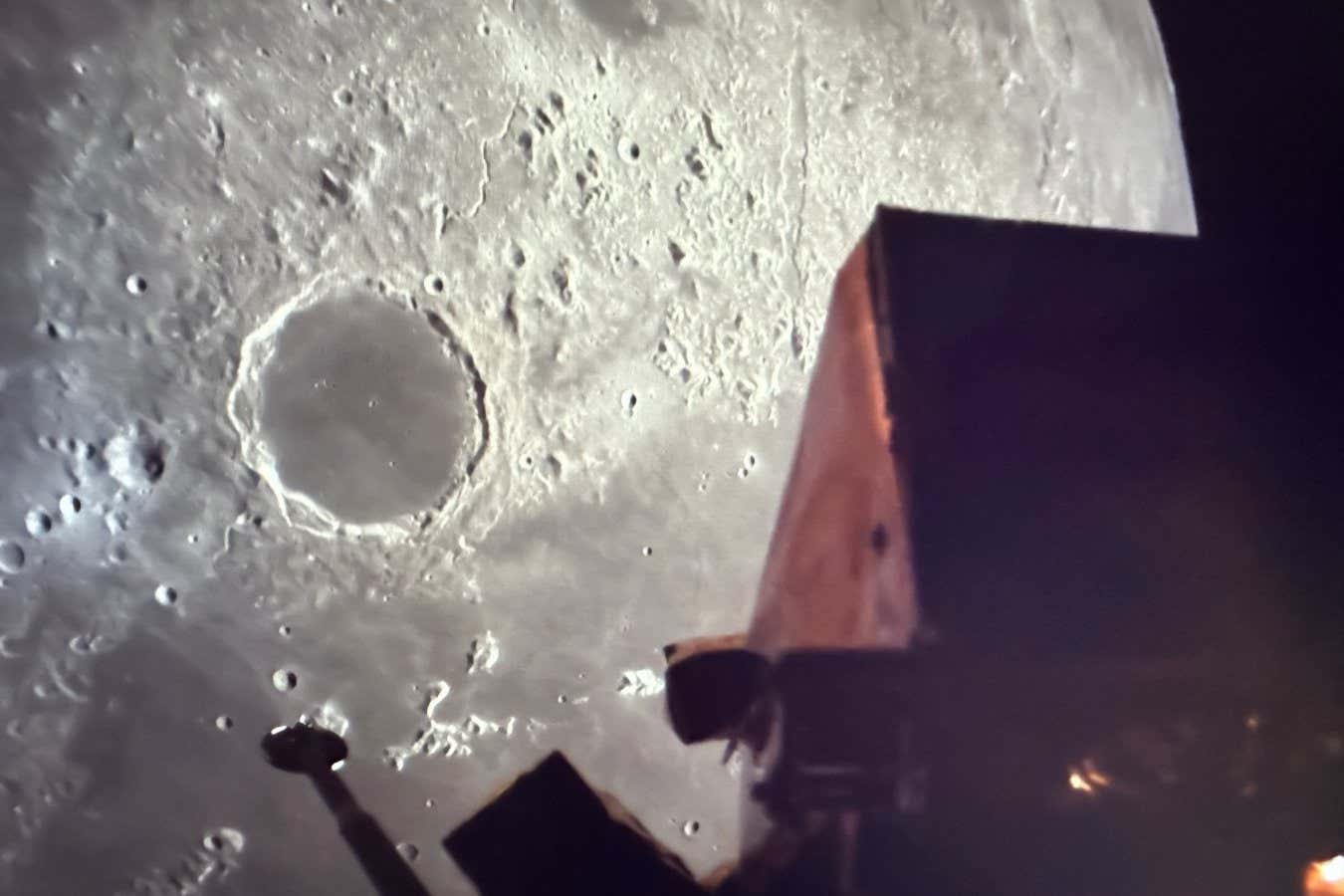Japan’s Resilience moon lander has crashed into the lunar surface


The surface of the moon, as seen from orbit by Resilience before it crashed
ispace SMBC x HAKUTO-R VENTURE MOON
A Japanese space mission hoping to make history as the third ever private lunar landing has ended in failure, after ispace’s Resilience lander smashed into the moon at some point after 7.13pm UTC on 5 June.
The lander had successfully descended to about 20 km above the moon’s surface, but ispace’s mission control lost contact shortly afterwards, when the probe fired its main engine for the final descent, and received no further communication.
The company said in a statement that a laser tool the craft used to measure its distance to the surface appeared to have malfunctioned, which would have caused the lander to slow down insufficiently, making the most likely outcome a crash landing.
“Given that there is currently no prospect of a successful lunar landing, our top priority is to swiftly analyse the telemetry data we have obtained thus far and work diligently to identify the cause,” said ispace CEO Takeshi Hakamada in the statement.
If it had been successful, Resilience would have been the second private lunar landing of this year and the third ever. It would also have marked the first non-US company to land on lunar soil, after iSpace’s first attempt, the Hakuto-R mission, ended in failure in 2023.
The Resilience lander started its moon-bound journey on 15 January, when it launched aboard a SpaceX rocket together with Firefly Aerospace’s Blue Ghost lander. While Blue Ghost touched down on 2 March, Resilience took a more circuitous route, travelling into deep space before doubling back and entering lunar orbit on 6 May. This winding path was necessary to land in the hard-to-reach northern plain called Mare Frigoris, where no previous moon mission had explored.
There were six experiments on board Resilience, including a device for splitting water into hydrogen and oxygen, a module for producing food from algae and a deep-space radiation monitor. The lander also contained a 5-kilogram rover, called Tenacious, that would have explored and photographed the lunar surface during the two weeks that Resilience was scheduled to run for.
Topics:
